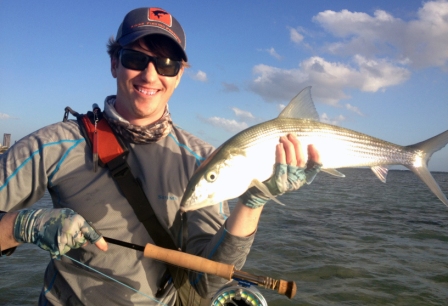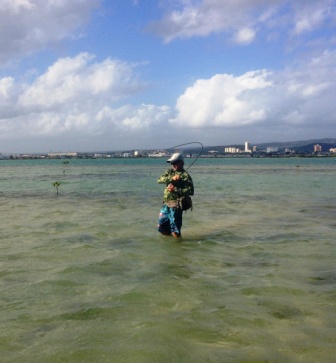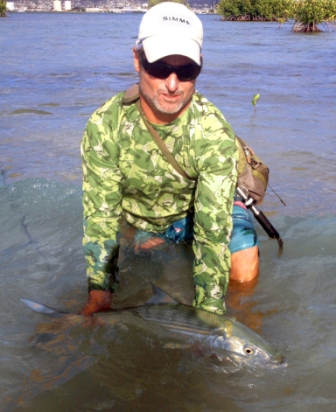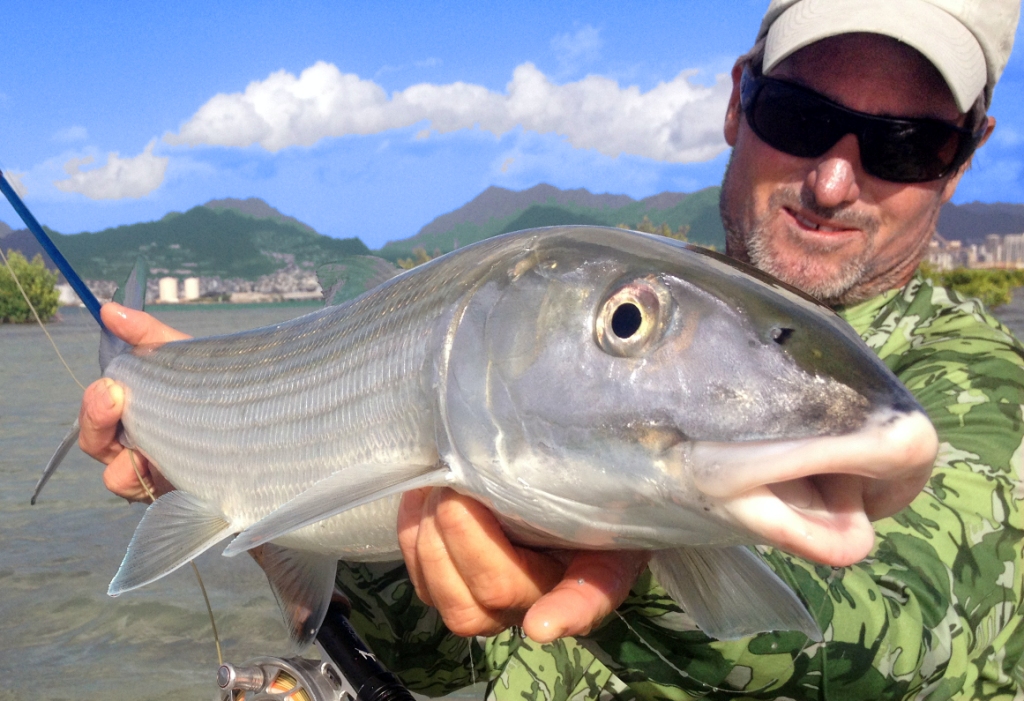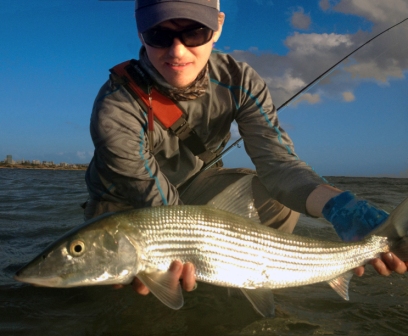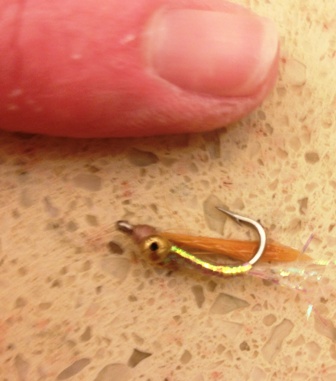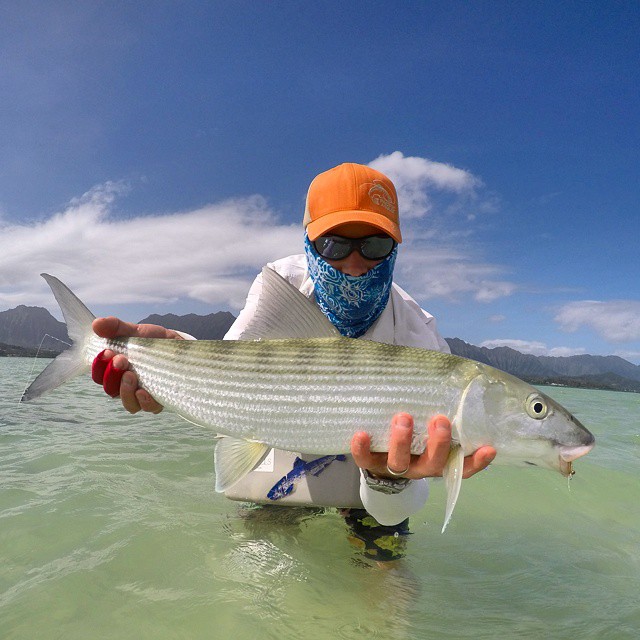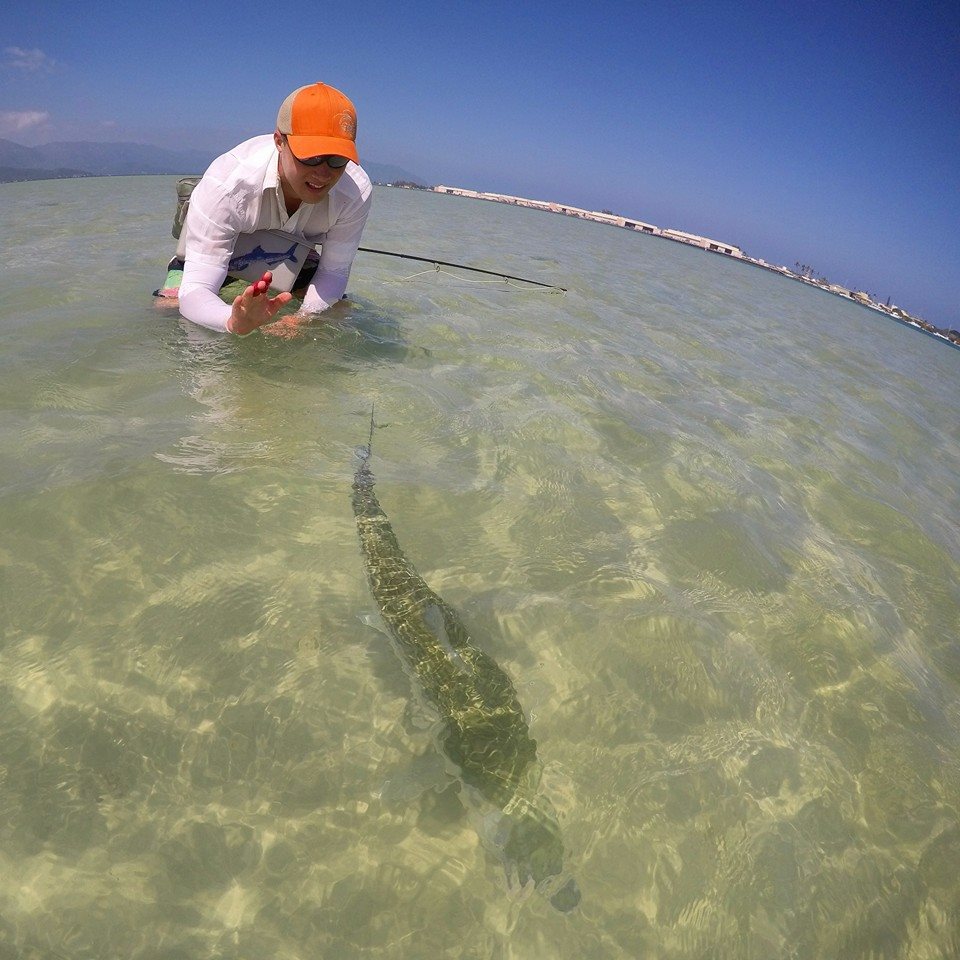Honolulu is known for epic surfing, Pearl Harbour, shaved ice and bad traffic, but for those who love warm water fishing it is known as one of the most challenging big bonefish destinations in the world.
For years I have heard stories of anglers fishing Hawaii and at first I didn’t put much stock in the hype. This changed when I began to notice that all the experts I talked to got a haunted look in their eyes whenever I brought up bonefishing in Hawaii. This winter when my wife and I decided to vacation on the island I knew that I couldn’t pass up an opportunity to see what that haunted look was all about.
What I found blew my expectations out of the water. I expected to see a few fish each day and if I made good casts I would catch them. I couldn’t have been more wrong. I was shocked at how many big fish I saw and even more shocked at how smart they were. As my guide Mike Hennessey put it “Hawaii is varsity level bonefishing. They are going to get in your head and it’s going to change you.”
He couldn’t have been more right. You have to cast softer, spot faster and move stealthier than any location I have experienced. I learned more about bonefishing in two days than I have in the last five years. I saw bonefish that I mistook for sharks and the glint of one tailing fish that was so big it’s tail stood 12 inches out of the water will be in my dreams for a long time.
“The Hawaiian bonefish environment seems to be hand crafted by the fishing gods to frustrate, captivate and inspire bonefishing anglers.”
This report will lay out what I learned, what you can expect and a few ideas worth considering if you ever find a way to visit Oahu and want to try your luck at this amazing fishery.
First thing you need to know is that the best fishing in Hawaii is on Oahu. There are a few other spots on the other islands worth looking at but most anglers’ focus on areas only a few minutes drive from Honolulu. The second thing you need to know is it is as demanding a bonefish destination as you can find. If you have never gone warm water fishing before don’t expect to be able to rent a kayak and figure out how to do this in a few days. I am no expert but I have some experience with bonefish and I was lucky enough to fish with Mike Hennessy and Lars Akerberg, two of the most experienced Hawaiian bonefish anglers in the world. We saw lots of fish but it was still the most challenging bonefishing I have ever encountered and I found ways to mess up that I didn’t even know existed.
I am fairly good at spotting fish. When I am in Mexico or Cuba I feel as though once my eyes adjust I can keep up with my guides spotting fish. The bottom of the Hawaiian flats is perfect for fish to hide and Mike and Lars served me a big dose of humble pie spotting fish where I only saw shadows. Long story short, if you only have a couple days, get a guide to help find and spot the fish.
There are two major fishing grounds I managed to check out while in Honolulu; Kane’ohe bay on the east side of the island and an area off the south side near Honolulu. Most of what I saw from the bay was deeper flats and it was conducive to fishing from a flats boat. The airport flats were shallower and fished well from foot. Both spots had similar bottoms, a mix of flat coral marked with sand holes, runways and coral heads. Even when we spotted fish they seemed to be able to disappear right in front of us in the constantly changing bottom colors. To make matters worse, dragging a fly over this kind of bottom was snag suicide. It was rare that you could strip more than three or four times without catching on coral. Both Mike and Lars had strategies to combat the harsh terrain.
Mike liked to sneak up on the fish as close as possible with a very stealthy slow approach. Instead of casting at the fish he led them about six to eight feet trying to make sure the bonefish did not see the fly dropping to the coral bottom. We then prayed and watched, hoping the fish would naturally pass near the fly. When we thought it was close enough Mike would use a very short slow strip to puff up sand and catch the fish’s attention. The second the fish reacted to the fly he stopped stripping. With any luck the fish would charge the fly but this is where Hawaiian bonefish were different than what I have experienced from bonefish in other locations. When the fish stopped near the fly and only when the fish stopped Mike had me make a firm long strip. I learned that this was not meant to move the fly, only to keep tension. For the most part when the fish stopped it was because he was eating the fly.
“You will not feel a Hawaiian bonefish bite, you will see it and then you only have a split second to get tight before he spits it out.”
This makes seeing the fish stop and eat extremely important and it was a joy to watch Mike spot fish and then walk me through the process of how to strip. I missed 90% of the time but it was all worth it when the line went tight.
Lars Akerberg’s strategy was very similar but he was a little more aggressive with his casting. Instead of stalking after fish and getting close enough to watch them eat on the unpredictable multi coloured bottom, we used an ambush style technique. Lars looked for areas with sandy openings that break up the coral. We would move from spot to spot spending a few minutes standing and watching each sand patch. The sand spots were small but made spotting fish a little easier. When we saw a fish Lars would make sure the cast landed in the sand. His strip and waiting technique was much the same as Mike’s, let the fish take it but because of the sand bottom we could get away with a few more missed strip-sets without snagging. Also, my untrained eyes had a little easier time seeing the fish “stop” in these areas.
It was a great learning experience to see both styles of fishing. Waiting with Lars 40 feet from a nice sand patch anticipating fish was addictive and the cat a mouse games that Mike and I played spotting monster tailers and hunting them down was exhilarating.
In both styles a lot of things can go wrong and you will have to be prepared for failure. You will not have to cast far but you will have to cast fast and accurately with a very soft landing. You will also have to manage line in a coral environment. This is very hard because coral catches on everything. Make sure you go prepared with good gear, a confident ability to double haul and a patient attitude that can stay cool and calm when lines are tangled around legs, caught on coral and wrapped around rod tips all the while a 10lb bonefish is tailing 20 ft in front of you. Long story short if you want to do this without driving yourself crazy you need a guide. Don’t worry if you can’t stay calm Mike has a great repertoire of four letter words perfect for cursing at bonefish and tangles.
Fly Rods for Hawaiian Bonefish
I learned a few interesting things about gear. The first was that heavy rods were not critical. In Kane’ohe bay with deeper flats and larger flies a 9wt was ideal. Casts were short so needing a heavy 10 wt to punch the wind was not as important as I expected. At the airport where the fish were in shallower water, a soft presentation was critical. I was surprised but Mike fished a 6wt so he could make the short soft casts without fighting a heavy rod. He matched it up with an 7wt reel to hold lots of backing. I used a 9wt Sage One that performed great in both situations but if I went back I would bring a lighter 7wt rod as well as the 9wt. I think the new Sage Salt will fit this bill perfectly with its soft tip and powerful butt section. If I had to recommend one fly rod for Hawaii it would be an 8wt Sage Salt.
Lars liked 7wts for the shallow flats and a 9wt for the deeper water because he liked to cast a little farther to the sandy bottoms were you could see fish at 40-60 ft.
I put Bruce Chard’s new Airflow Tropical Punch line to the test on this trip and loved it. It loads up fast in the wind but I can still lay a nice presentation when needed. The 9wt Sage One does not need to be over-lined with this combination.
Leaders for Hawaiian Bonefish
I learned a lot from both Mike and Lars with leaders as well. In the deeper flats Mike used a 16lb fluorocarbon leader and instead of tippetting up off the front end of the leader he added or subtracted butt section depending on the conditions and wind.
“Some people use custom made leaders with lots of knots, I think that knots do three things, spook fish, snag coral and break.”
I liked Mike’s system. Adding a butt section extended the leader and there were no knots near the fly to possibly glint in the sun and spook fish. The other benefit of this system was that if a coral head caught on the knot the heavy pound test was much more likely to rip out of the coral where a knot in light tippet would probably break.
On the shallow flats Mike surprised me again and went light but with the same tactic. He took a 10-12lb full fluorocarbon leaders and added a butt section to make it about 12 ft long. This seamed light to me but after spooking a dozen fish with perfect casts I began to understand. It also plays into his light rod strategy. His 6wt rod can absorb the shock of a 10lb plus fish on light leader where a 10wt rod might break it off.
Lars used a slightly different style. He leaned toward slightly heavier leaders using 14-20lb fluorocarbon in the shallow flats. To make things simple he uses just 3 sections of tippet Again this played into his slightly longer casting strategy. Both Lars and Mike used only fluorocarbon leaders and tippet.
Flies for Hawaiian Bonefish
I love looking into a guides fly box. If the box is beaten and almost empty that’s not a bad thing. It means he has been on the water a lot. Mike Hennessey used basically 2 different patterns. In deep water he used a custom tan mantis pattern called the Cognac Shrimp that used brown spey hackle that was awesome because it moves great and doesn’t hold much water so it casts well. He carried 2 weights and 2 sizes of the same patterns to change up between different flats. This is very similar to how I use one steelhead pattern and tie it in 2 weights and 2 sizes to vary for the conditions.
On the shallow flats both Mike and Lars surprised me and used extremely small shrimpy/crab patterns in light brown colors. Mike’s pattern had small lead eyes and looked as though it had gone through a blender.
With Lars we stuck to a small pattern that he tied. It was a quite simple polar bear Charlie but as all guide flies are, it was simple but tied with purpose. It had medium gold bead chain eyes a special custom died brown polar bear wing and then he tied brown thread over the body and wrapped it with pearl flash. The brown thread showed through the flash perfectly to make the fly glow brown but not be overly flashy. The tail was also pearl flash but Lars insisted that it could not be straight. Before fishing he ruffled up the flash tail.
Both of these patterns got great reactions from the fish. I am sure there are many patterns that would work but I have learned to trust a guide’s fly even if it is beaten or simple. They are that way for a reason.
Overall, the Hawaiian bonefish fishery blew me away and I learned a ton from Mike and Lars. The stories of it being extremely hard are true but there is an abundant population of extremely large fish that will keep the adrenalin pumping even if you don’t hook a lot of fish per day. For me I landed three fish in two days and lost three more. I was very happy with this result and even though I did not hook a monster double digit bonefish I had one break me off and I saw more large fish than small ones. It is only going to give me an excuse to go back.
If you are going to be on Oahu, have done a little bonefishing before and want to tackle the varsity league do not pass up the opportunity to get out on the water. Even if you do not hook the fish of a lifetime you will learn a ton and you are going to see bonefish that are so big they will haunt your dreams.
Give me a call at the shop and I will set you up with the right gear and put you in contact with Mike Hennessy. Mike and his team are some of the best flats guides I have ever fished with.
Lars is an excellent resource, having guided for six years in Hawaii. He has been busy working in Vancouver as a Bond Trader for the last couple years, but there are rumours that dreams of a 16lb bonefish may be pulling him back into the game. We can connect you with him should you have detailed questions.
Don’t hesitate to call me at the shop 604.872.2204 or email me at msharp@pacificangler.ca to chat more about your next bonefishing adventure.
– Matt Sharp


